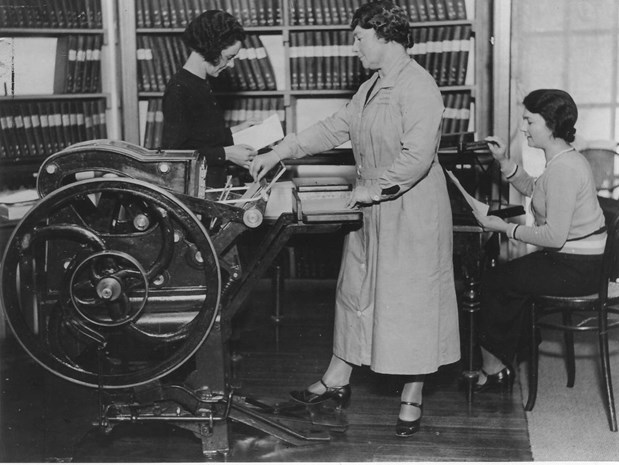Vision Australian librarian, Sarah Bloedorn was a recent guest on Talking Vision discussing two trail-blazing librarians whose work was instrumental in braille accessibility and production in Australia, May Harrison and Minnie Crabbe.
May was one of the principal founders of the Victorian Braille Writers’ Association in 1894. Prior to this, braille was unavailable in Victoria.
Along with Tilly Aston, she then went to teach over 1000 people braille and established a small lending library in her home. May’s niece, Minnie began her career in in braille as an assistant to her aunt. In 1934, Minnie, in partnership with Mr Hulme from Sentinel Engineering Works, invented the Crabb-Hulme, printing press.

Image: This image is from the Vision Australia Heritage Collection and it depicts the Royal Victorian Institute for the Blind's Chief Librarian in 1934, Minne Crabb, using a the Crabb-Hulme printing press.
It was the only machine of its kind in the world and revolutionised braille production by allowing duplication and printing of both sides of a page, greatly reducing storage and production costs.
“If we think back, it was such a long time ago and at a time when women didn’t have the rights or the education that we enjoy now, yet both of these women made such an enormous contribution, to ensure people had access to braille,” Sarah said. “Their legacy still influences the work we do today here at the Vision Australia Library.”
You can listen to the full Talking Vision conversation here.
The Crabbe-Hulme printing press is on display at Vision Australia’s Kooyong office.










